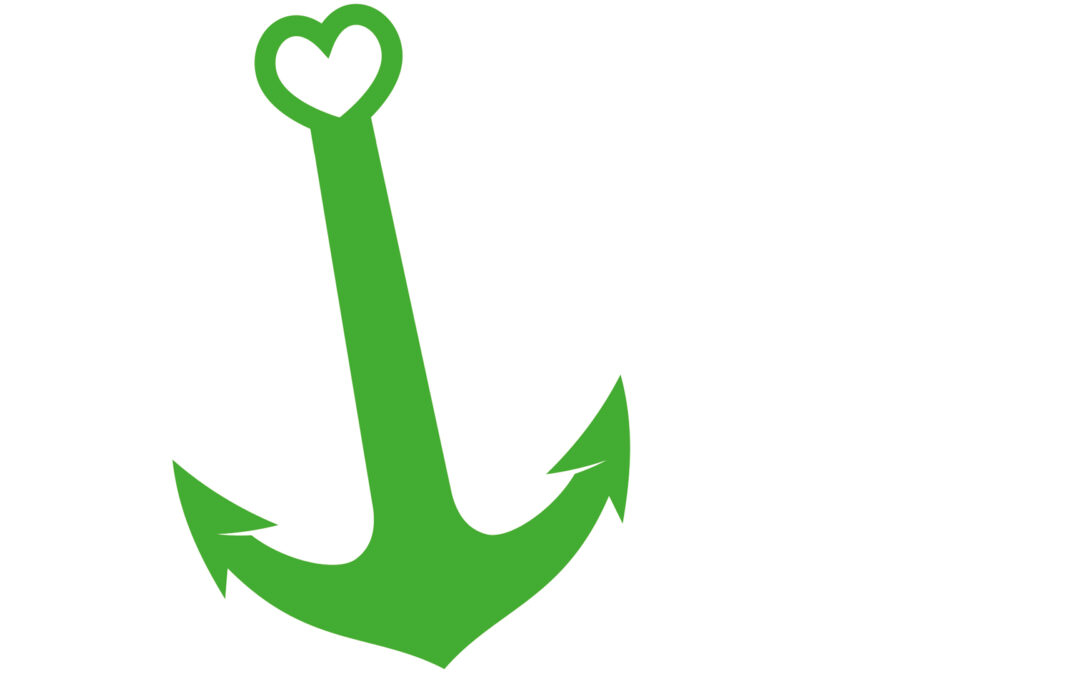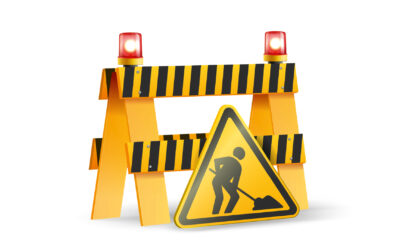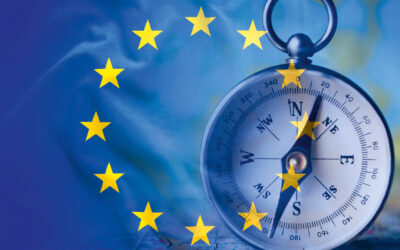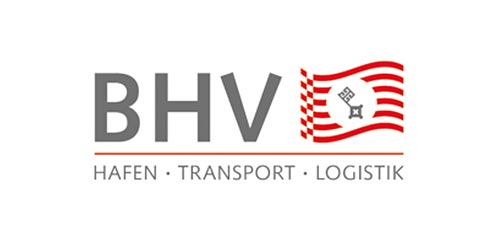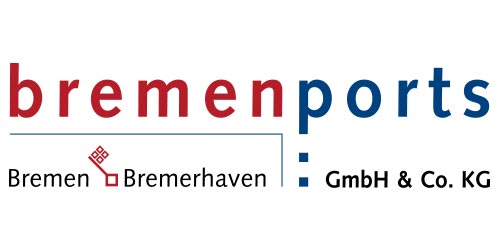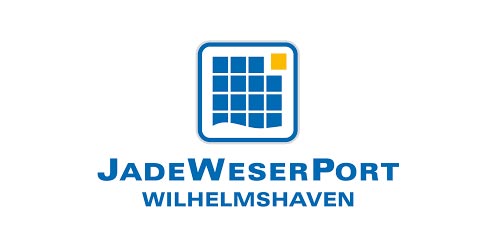United by a common goal – the sustainable transformation of the industry – a wide variety of players from the port and logistics industry will gather in Bremen when ENVOCONNECT opens its doors for the third time this year. But how far has Germany actually come in terms of sustainability? And which areas are currently being worked on most intensively?
With its motto “360° green focus – the new reality”, ENVOCONNECT is sending a clear message this year that sustainability is no longer an optional added bonus, rather something to be lived. “Sustainability today is viewed as an integral part of business models and decisions across the board,” explained bremenports Managing Director Robert Howe. “It’s not about isolated measures or pure marketing any more, but rather the interaction of multiple players.” However, this interaction is made more difficult by the fact that market participants are faced with a wide range of ecological, economic and social sustainability issues that are both perceived and treated differently, as the following expert assessments show.
“Still plenty of room for improvement”
Flóra Gulyás, research associate at the Institute of Shipping Economics and Logistics (ISL), attests that European and German seaports are on the “right track” towards sustainability. “The concept of sustainability is alive in all European ports, albeit to a greater extent in some than in others,” she stated. “Besides Germany and the Netherlands, I see the Baltic ports playing a particularly pioneering role here.” In her view, the move towards more sustainability is very important. “It’s a basic prerequisite for creating transparency and generating reliable figures for updating the emissions inventory,” she explained. The latter helps to identify emission sources in the port, derive targeted measures and monitor progress.
The ISL has already gathered valuable insights into sustainability through a wide range of projects and simulations. Indeed, among other projects, Gulyás highlights “MaritIEM” – a 2020-2023 project that ran as part of the Federal Ministry of Transport and Digital Infrastructure’s (BMVI) mFund research initiative. The ports of Bremen and Bremerhaven served as models for assessing the effectiveness of measures designed to reduce emissions in maritime transport chains. “Not only were we able to gain a wealth of important insights from the project, we also identified a number of concrete options for action,” summarised Gulyás. “This was particularly the case with expanding onshore power supplies, optimising layover times and switching to low-emission and zero-emission propulsion systems in port operations.”
Currently, EU Directive 2023/1804 requires that all major seaports in the Trans-European Transport Network (TEN-T) ensure that onshore power plants are available for container and passenger vessels – especially cruise ships – by 1 January 2030 at the latest. With this in mind, Gulyás believes that it is particularly important for the comprehensive expansion of onshore power supplies that the electricity fed into the grid comes from renewable energy sources, not from fossil fuels. Regarding layover times, better coordinated, digitalised processes between port operations, terminals and shipping companies play a key role in reducing these times and, in turn, reducing emissions. “MaritIEM” has also shown that switching terminal handling equipment and shunting locomotives to electric or alternative drive trains can achieve significant improvements in sustainability.
Despite her optimism regarding progress in sustainability strategies, Gulyás sees “plenty of room for improvement”, especially in ship propulsion systems. “At the moment, not even one per cent of large ships with more than 300 gross register tons (GRT) can be powered by alternative fuels such as ammonia, methanol, hydrogen or biofuel,” the expert added. “Although new orders for such ships are on the rise, most of them are LNG-powered vessels. This results in significant environmental damage due to methane leakage.” She continued: “In all the talk about sustainability we shouldn’t forget that the ports have limited influence on some levers, such as ship propulsion technologies. Nevertheless, ports can certainly have a direct impact by using environmental regulations or incentive systems such as discounts for environmentally friendly ships.”
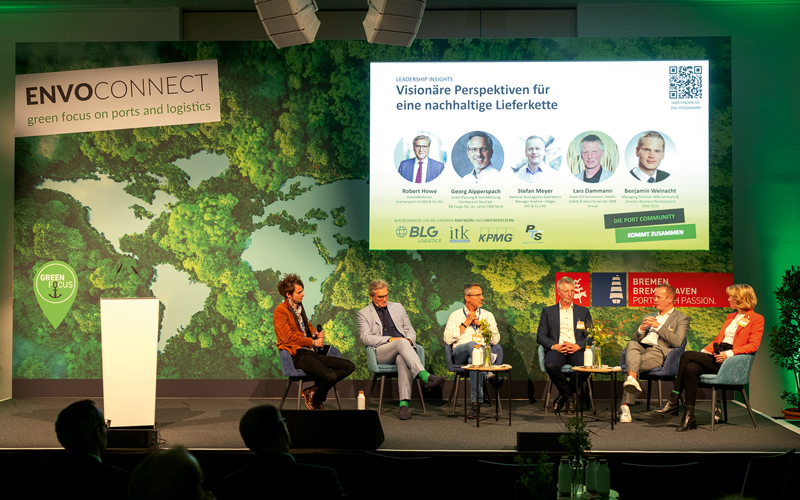
Focus on wind and fuel
Mariko in Leer is also closely involved in sustainability issues and, as an interface between the maritime sector, science and politics, aims to make shipping more resource-efficient and environmentally friendly under economic conditions. For Felix Agostini, GreenShipping Project Manager at Mariko, two things are particularly important in driving decarbonisation forward – the further development of wind propulsion technologies and the increased use of alternative fuels. Mariko is currently involved in the former, primarily in the “FlettnerFLEET” and “Rasant – Hybrid Sail Cargo Ships” projects. “While ‘FlettnerFLEET’ is about developing Flettner technology further for wider application, the ‘Rasant’ project aims to come up with ship designs open to all forms of technology,” stated Agostini, and continued: “These new concepts are expected to meet today’s climate-friendly cargo shipping requirements and primarily use wind energy.” He added: “Of course, this isn’t the most suitable sustainability option for every type of ship. For container ships, for example, which need most of their deck space for cargo, this idea is much less viable than for tankers, bulk carriers, multipurpose and RoRo ships.” Nevertheless, he remained convinced that sail systems will continue to gain ground in shipping. “A few years ago, there were only a handful of global freight and passenger shipping vessels using them. Now, there are already almost 100 – and the trend is clearly rising,” he said.

“The ports have limited influence on some levers.”
Flóra Gulyás, research associate at the Institute of Shipping Economics and Logistics (ISL)
As home to the GreenShipping Lower Saxony competence centre, Mariko is also involved in the second topic area, alternative fuels, which focuses on charting the course for energy-efficient ships and solving ecological issues. “Methanol and ammonia are promising fuels,” stated Agostini. “I’m nonetheless certain that we won’t have a one-size-fits-all solution or just one fuel in the future, rather several options will exist side by side.” It is his belief that availability and price will dictate which technology ultimately prevails.
Overall, Agostini still considers Europe and Germany to be among the maritime sector’s industrial leaders in terms of sustainability. “Nevertheless, added value and practical implementation problems do exist,” the expert emphasised. He would like to see Germany act more boldly and openly in this regard. “We’re working with our neighbours in the Netherlands on numerous projects,” he continued. “Interestingly, the Dutch are better able to adapt to new market situations and find it easier to see the bigger picture. We could definitely learn a thing or two from them. We need a more dynamic implementation process.”
Ports must respond to climate change
Bärbel Koppe, Professor of Hydraulic Engineering and Hydromechanics at Wismar University of Applied Sciences and member of the Port Technology Association’s (HTG) “KlimaHafen” working group, investigates how climate change affects German sea and inland ports infrastructure and superstructure. She recently summarised the current state of knowledge for LOGISTICS PILOT, although the working group’s initial recommendations for tackling climate change will not be presented officially until 2025’s third quarter. Koppe and her colleagues believe that the basic prerequisites for creating climate-resilient ports are both the knowledge necessary to recognise the expected indicators of change in climate parameters and the current state of the port facilities’ buildings and structures. “When dealing with this issue, it becomes apparent time and again that many ports don’t have a meaningful register of buildings and facilities,” she stated.
According to Koppe, it is highly likely that the average air and water temperatures will rise and that weather events such as extreme heat and heatwaves will become more frequent on the German North Sea and Baltic Sea coasts. Rising average sea levels and storm surge water levels are additional climate phenomena that we can definitely expect to see in the coming years. Moreover, the members of the HTG working group expect with “medium certainty”, as they put it, that the number of extreme precipitation events and convective strong wind events will increase.
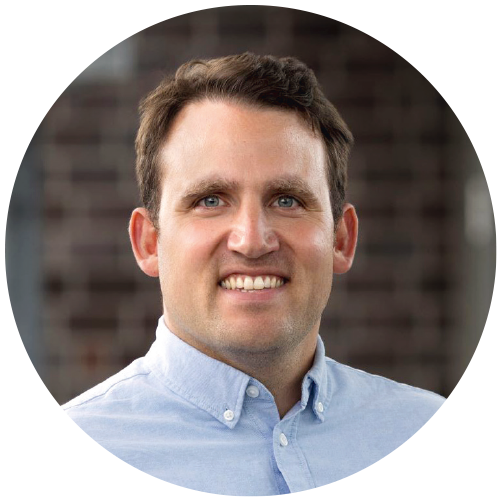
“We won’t have a one-size-fits-all solution or just one fuel in the future.”
Felix Agostini, GreenShipping Project Manager at Mariko
“Germany doesn’t need an industrial museum”
Interview with Dr Kira Vinke, Head of the Centre for Climate and Foreign Policy at the German Council on Foreign Relations
How far has Germany come in terms of sustainability? How much time is left to mitigate the climate crisis?
VINKE: Germany has made considerable progress in advancing its sustainability goals, but there’s still much to be done. When it comes to climate protection, the problems in the transport and construction sectors are immense, and existing innovations must be put to greater use. Clear measures are needed to ensure that Germany’s climate targets for 2030 are met and that we stay on track for the period beyond. Tackling global climate change is a race against time, not least because the sooner we move away from technologies that pollute the atmosphere, the less severe the expected climate impacts will be. Temperatures are already rising rapidly, and heatwaves and storms are real threats. The sooner we tackle the causes, the better it will be. If we fail to do so, we risk losing control.
What significance do the Green Deal and the Industrial Green Deal have in this context?
VINKE: We in Europe must take the lead in tackling climate change, as we’ve contributed significantly to the problem. We need swift action. Industry needs a reliable framework, and many companies have already set out on the path to reducing their impact on the environment. We have to reject any efforts to water down the European Green Deal outright. Only by using new green technologies can we remain competitive with countries such as China, which are currently heavily subsidising key industries in the sustainability sector. Change is difficult, yes, but Germany doesn’t need an industrial museum.
In your opinion, what are the most important tasks that the maritime industry and logistics must tackle in the near future in terms of sustainability?
VINKE: In the maritime industry, we need to take action on several fronts. First, we need to develop and introduce alternative propulsion systems, such as hydrogen derivatives like ammonia or methanol. Battery-powered electric motors are already in use in isolated cases for shorter ferry routes. Flettner rotors, which supplement traditional combustion engines with wind power, can also lead to savings in fuel consumption – a significant first step towards sustainability.
But even simple tasks such as cleaning the hull regularly can contribute to reducing consumption and achieving climate targets. Pilot projects are also attempting to use quicklime to capture and store CO₂ directly from diesel generators. However, manufacturing quicklime is also energy-intensive and, if it’s not produced sustainably, merely displaces the problem.
We should also pay better attention to the role of the ports. Shoreside power from sustainable sources, the electrification of local transport and connections to rail freight transport are examples of sustainability efforts already being implemented in some German ports.
Environmental compatibility begins with production in shipyards and the supply chains behind them. For example, the manufacture of green steel can reduce a ship’s carbon footprint. Ultimately, political framework conditions, such as higher pricing for emitting climate-damaging gases and a strong CO₂ border adjustment, are also needed. The latter can protect European investments in green production from dirtier, cheaper competitors from abroad
(bre)

“Tackling global climate change is a race against time.”
Dr Kira Vinke, Head of the Centre for Climate and Foreign Policy at the German Council on Foreign Relations
In view of a possible rise in sea levels and, in turn, in storm surge water levels, port authorities are now under increased pressure to improve flood protection at terminals and to raise the protective structures there. As far as the increasing frequency of summer storms and heavy rainfall are concerned, Koppe also points to the possible consequences for hinterland transport. “These freak weather conditions have particularly affected the railways recently.” she indicated. “This is why, among other things, we need to think about how to deal with fallen trees better and prevent possible line closures.”
However, Koppe currently sees a number of shortcomings in the implementation of sustainability efforts. “Unfortunately, the question as to ‘How can we can make money?’ continues to dominate the port industry – both on the part of port authorities and terminal operators, and on the part of planners and construction companies.” Plus, there is still no end in sight to massive fossil fuel-driven port developments in Germany. Despite all the criticism, however, she also sees positive approaches. For example, the decarbonisation of operational processes is now at the top of the agenda for terminal operators, not least for economic reasons.
Strong initiative, strong dependence on Trump and his ilk
From a different perspective, the northern region of the Regional Network for Sustainability Strategies (RENN) is tackling the issue of sustainability in the federal states of Bremen, Hamburg, Mecklenburg-Western Pomerania, Lower Saxony and Schleswig-Holstein. In cooperation with regional partners, RENN unites various stakeholders to generate new impetus for greater sustainability and to bring the Sustainable Development Goals of the UN Agenda 2030 to the forefront of society. “The issue of mobility is currently a high priority for our local authorities,” explained Dominik Jung, who supports RENN as a representative of the Lower Saxony Association of Towns and Municipalities. “This includes creating a charging station infrastructure for electric vehicles, implementing car-sharing models in rural areas and increasing the availability of cargo bikes locally.”
Indeed, tasks relating to renewable energies and climate protection are also being pursued with vigour in Lower Saxony. Important cornerstones regarding the former are awareness campaigns, support for photovoltaic projects and the development of concepts for establishing solar and wind power plants in the region. In terms of climate change mitigation, urban development measures, the creation of public green spaces and raising public awareness of heavy rainfall and heat protection are especially important. When these regional projects are considered in relation to the sustainability challenges facing the maritime industry and logistics, it soon becomes clear that the fields of action and overlapping areas between all those involved are not so far apart after all.
Jung’s analysis of the status quo is equally applicable. “I believe that Germany’s on the right track,” he said, “particularly in terms of environmental sustainability, but we’ve got to be consistent here. I do have doubts about economic sustainability, though. Several significant showcase projects in this country have already failed on the grounds that they’d not prove profitable. I don’t know if that is the right maxim,” he continued. “Unfortunately, the social aspect is always the one most neglected,” he added, with regard to the third pillar of sustainability. “And I fear that this won’t change until economic prosperity in Germany experiences an upturn again. But we can’t influence that alone; it heavily depends on the unpredictability of certain players across the Atlantic and Indian Ocean.” (bre)
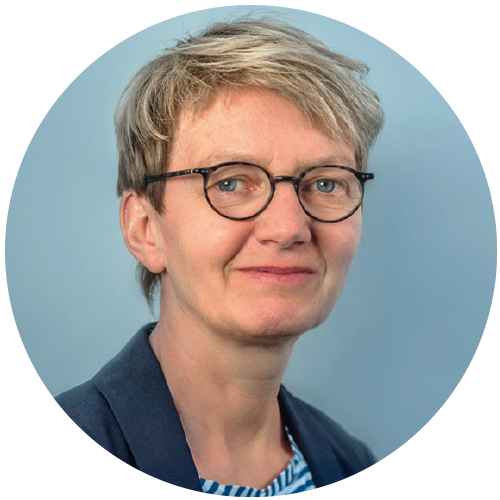
“Unfortunately, the question ‘How we can make money here?’ continues to dominate.”
Bärbel Koppe, Professor of Hydraulic Engineering and Hydromechanics at Wismar University of Applied Sciences
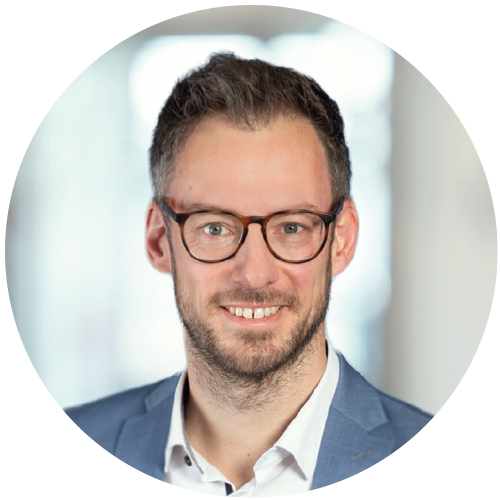
“The social aspect is always the one most neglected.”
Dominik Jung, representative of the Lower Saxony Association of Towns and Municipalities

